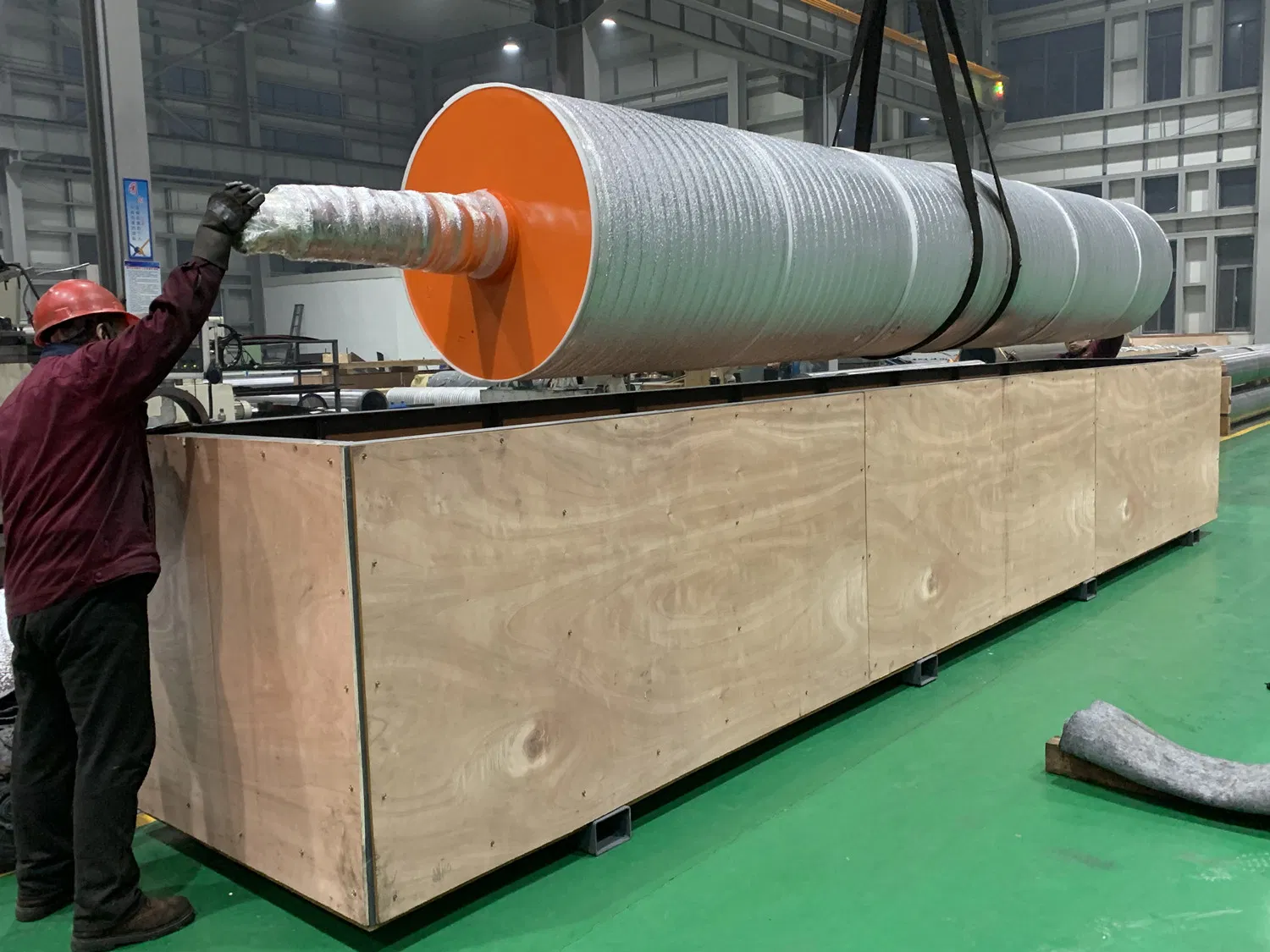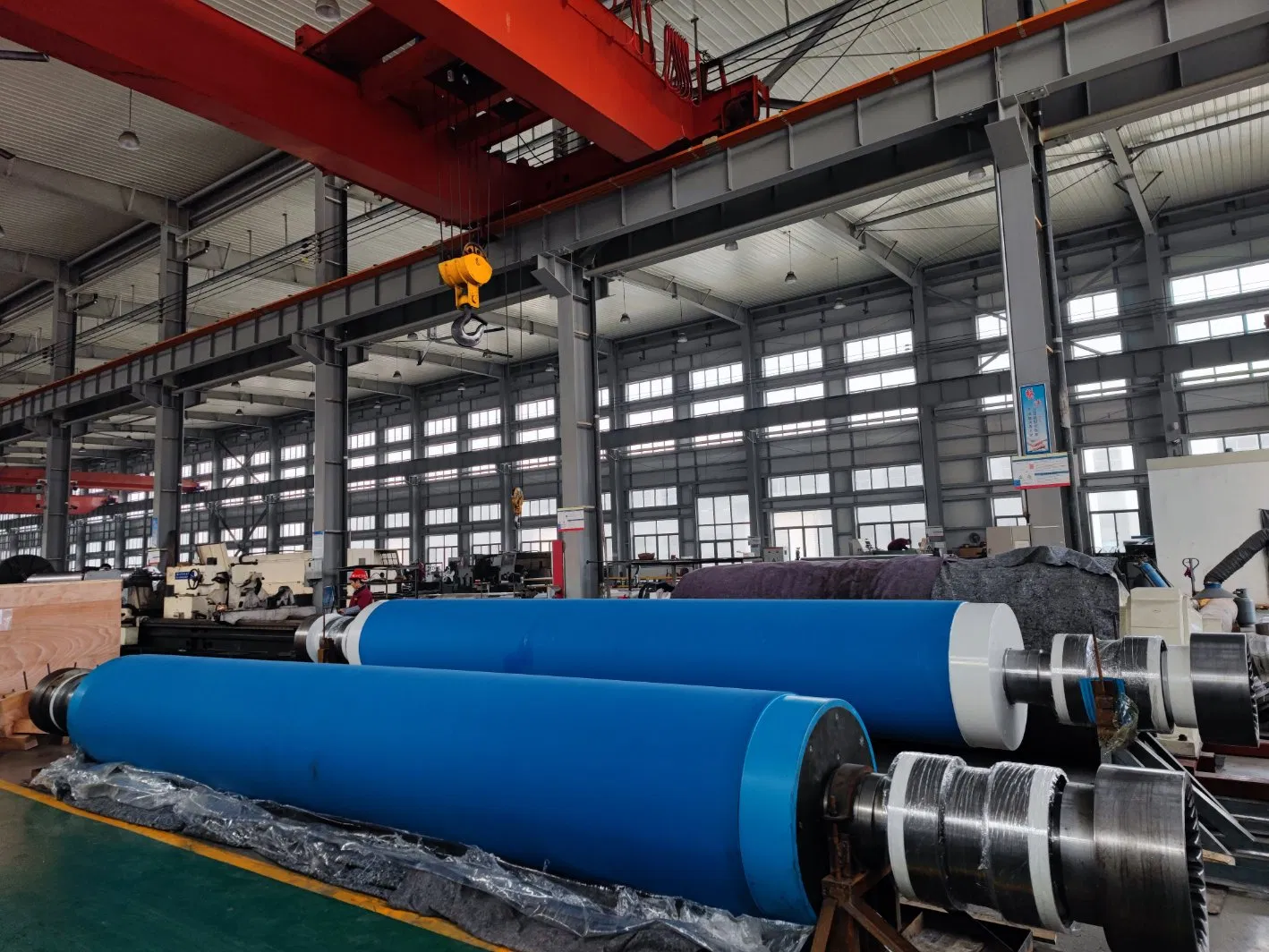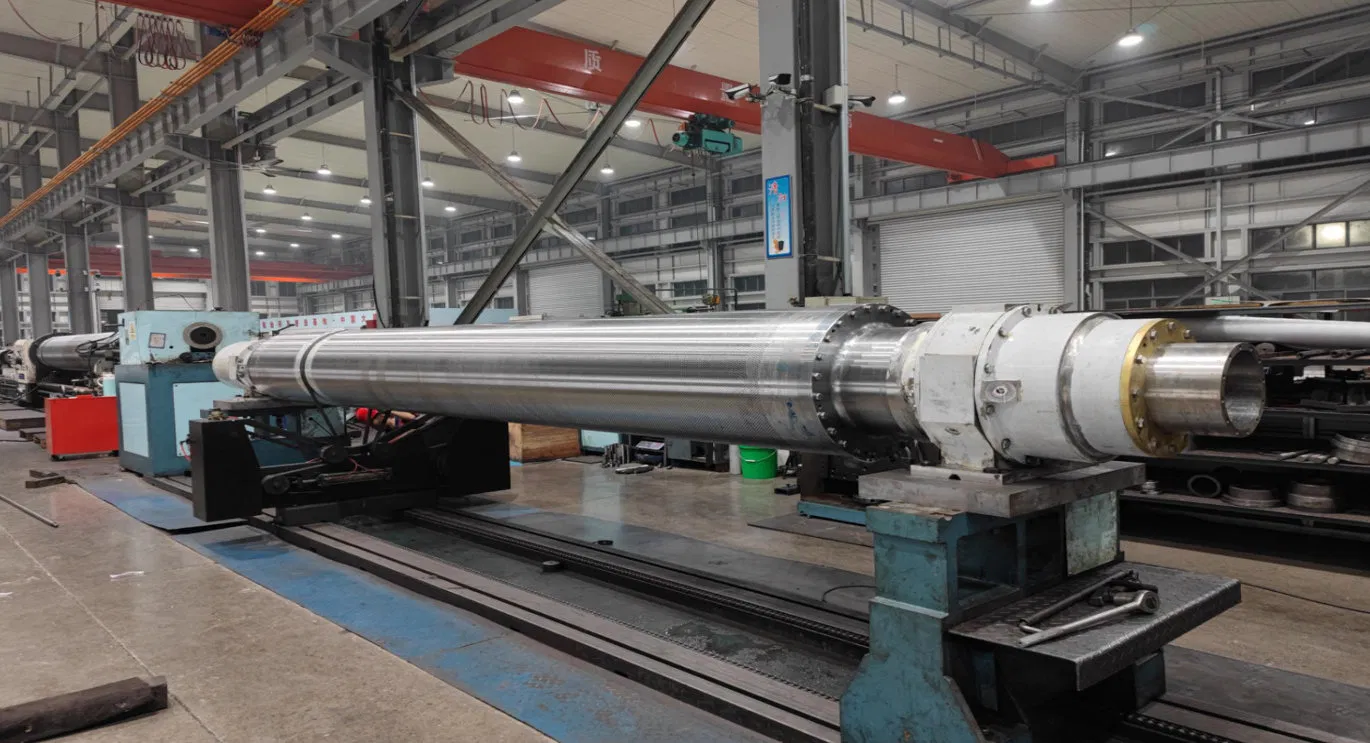In the demanding world of pulp and paper manufacturing, every component plays a critical role in the continuous, high-speed production process. Among these, the rolls within a paper machine stand out as arguably the most vital. From forming and pressing to drying and calendering, these rolls are subjected to immense pressures, high temperatures, and constant wear. Their flawless operation is non-negotiable for producing quality paper efficiently. This is precisely why expert paper machine roll repair services are not just a convenience, but an absolute necessity for any mill aiming for peak performance and longevity.
Frankly speaking, neglecting the condition of these rolls can lead to catastrophic failures, costly downtime, and a significant drop in product quality. Imagine a symphony orchestra where the lead violinist's instrument is out of tune – the entire performance suffers. Similarly, a single compromised roll can throw off an entire paper machine, impacting everything downstream. This article delves deep into the world of roll repair, exploring why it's so crucial, what common issues arise, the intricate repair processes involved, and how to choose the best service provider to safeguard your operations.
The Unseen Heroes: Why Paper Machine Rolls Demand Expert Attention
To be honest, most people outside the industry don't realize the sheer complexity and precision involved in papermaking. It’s a marvel of engineering, and the rolls are at its heart. These aren't just simple cylinders; they are highly engineered components, often weighing several tons, designed to perform specific functions with micron-level accuracy.
The Criticality of Rolls in Papermaking
Consider the various stages: the forming section uses rolls to dewater the pulp slurry, the press section employs massive rolls to squeeze out more water and consolidate the sheet, and the dryer section relies on heated rolls to evaporate residual moisture. Finally, calender rolls smooth and densify the paper. Each roll type has unique material compositions, surface finishes, and operational requirements. Any deviation from their optimal state can lead to issues like uneven moisture profiles, poor sheet formation, reduced strength, or surface defects on the final product.
The High Stakes of Roll Failure
When a roll fails, the consequences ripple through the entire production line. We're talking about unscheduled shutdowns, which can cost a mill hundreds of thousands of dollars per hour in lost production. Beyond the immediate financial hit, there's the potential for damage to other machine components, increased energy consumption due to inefficiencies, and a backlog of orders that can impact customer satisfaction. In my experience, proactive maintenance and timely repair are always more cost-effective than reactive crisis management. Have you ever wondered about the true cost of an unexpected shutdown in a paper mill? It's far more than just lost production; it impacts reputation, workforce morale, and long-term profitability.
Decoding Damage: Common Issues Affecting Paper Machine Rolls
Despite their robust construction, paper machine rolls are constantly battling a barrage of operational stresses. Understanding the common types of damage is the first step in appreciating the value of professional paper machine roll repair services.
Surface Wear and Corrosion
One of the most frequent culprits is surface wear. This can manifest as grooving, pitting, or general abrasion caused by the continuous contact with the paper web, felts, and doctor blades. Over time, this wear degrades the roll's surface profile, leading to uneven pressure distribution and compromised sheet quality. Corrosion, often due to the harsh chemical environment within the mill, can also attack roll surfaces and internal components, weakening the structure and leading to premature failure.
Bearing and Journal Damage
The journals (the ends of the roll shaft) and their associated bearings are critical for smooth rotation. Misalignment, inadequate lubrication, or excessive load can lead to bearing failure, journal wear, or even cracking. This type of damage often results in excessive vibration, noise, and heat, which can quickly escalate into a major mechanical breakdown if not addressed.
Dynamic Imbalance and Vibration
Even slight imbalances in a roll, perhaps due to uneven material distribution or accumulated debris, can cause significant vibrations at high operating speeds. These vibrations not only affect the quality of the paper being produced but also put undue stress on bearings, machine frames, and other components, accelerating wear and increasing the risk of catastrophic failure. It's worth noting that what seems like a minor vibration can quickly become a major headache.
Fatigue Cracks and Structural Integrity Issues
Constant cyclical loading can lead to fatigue cracks, particularly in high-stress areas like the journals or within the roll body itself. These cracks can propagate silently over time, eventually leading to sudden and complete roll failure. Detecting these issues early requires specialized non-destructive testing (NDT) techniques, which are a hallmark of comprehensive industrial roll maintenance.

The Art and Science of Professional Roll Repair
The process of repairing a paper machine roll is far more intricate than simply patching up a damaged part. It's a highly specialized field that combines advanced engineering principles with precision craftsmanship.
Initial Assessment and Diagnostics
The repair journey begins with a thorough inspection. This often involves visual examination, dimensional checks, and advanced non-destructive testing (NDT) methods such as ultrasonic testing, magnetic particle inspection, and dye penetrant testing to identify hidden cracks, internal defects, and material fatigue. This diagnostic phase is crucial for determining the extent of the damage and formulating the most effective repair strategy. Many experts agree that a proper diagnosis saves significant time and money in the long run.
Precision Grinding and Machining
Once the damage is assessed, the roll often undergoes precision grinding. This involves removing a minimal amount of material from the roll surface to restore its original cylindrical shape, concentricity, and surface finish. For rolls with significant wear or damage, more extensive machining might be required, sometimes involving the removal of old coatings or the preparation of surfaces for new material application. This is where true precision roll grinding expertise comes into play, ensuring exact specifications are met.
Thermal Spray Coatings and Rebuilding
For rolls that have lost significant material or require enhanced surface properties (like wear resistance or release properties), thermal spray coatings are often applied. Techniques such as High-Velocity Oxygen Fuel (HVOF) or plasma spraying can deposit specialized metallic or ceramic layers that are harder and more durable than the original material. In cases of severe damage to journals or internal structures, welding and machining are used to rebuild the affected areas, restoring structural integrity.
Balancing and Final Inspection
After any material addition or removal, dynamic balancing is absolutely essential. This process ensures that the roll rotates smoothly at operating speeds, minimizing vibration and preventing premature wear on bearings and other machine components. The final stage involves another round of meticulous inspections, including dimensional checks, surface finish verification, and often, a final NDT scan to confirm the roll meets all OEM specifications and industry standards.

Choosing Your Partner: What to Look for in Paper Machine Roll Repair Services
Selecting the right service provider for your roll repair needs is a decision that can significantly impact your mill's operational efficiency and bottom line. It's not just about getting the job done; it's about getting it done right, the first time.
Expertise and Experience
Look for companies with a proven track record specifically in pulp and paper industry equipment repair. They should have engineers and technicians who understand the unique challenges and specifications of various paper machine rolls, from suction rolls to calender rolls. Experience translates into knowing common failure modes, efficient repair methodologies, and the ability to handle unexpected complexities.
Advanced Technology and Equipment
A top-tier repair facility will invest in state-of-the-art equipment. This includes large-capacity lathes and grinders capable of handling massive rolls, advanced thermal spray systems, sophisticated balancing machines, and a full suite of NDT tools. Without the right technology, achieving the necessary precision and quality is simply impossible.
Comprehensive Service Offerings
The best providers offer more than just basic repair. They often provide predictive maintenance services, on-site inspections, emergency repair capabilities, and even spare roll management programs. A holistic approach ensures that all your roll maintenance needs can be met by a single, trusted partner.
Turnaround Time and Reliability
Time is money in the paper industry. A reliable repair service understands the urgency of getting your rolls back into production. In my experience, clear communication regarding timelines, coupled with a history of delivering on promises, is a strong indicator of a dependable partner. Always inquire about their typical turnaround times and their capacity to handle emergency repairs.
The ROI of Restoration: Benefits of Timely Roll Repair
Investing in professional paper machine roll repair services isn't an expense; it's a strategic investment that yields significant returns. The benefits extend far beyond simply getting a damaged roll back into service.
Extending Equipment Lifespan
Properly repaired and reconditioned rolls can often outlast new ones, especially when enhanced with superior coatings or materials during the repair process. This significantly extends the operational lifespan of your valuable assets, delaying the need for costly new roll purchases. It’s a classic case of a stitch in time saving nine.
Enhancing Product Quality and Consistency
Rolls that are perfectly balanced, precisely ground, and have optimal surface finishes directly contribute to higher quality paper. This means fewer defects, more consistent thickness and moisture profiles, and improved runnability. Ultimately, this leads to a better product that meets customer specifications and reduces waste.
Boosting Operational Efficiency and Uptime
By addressing roll issues proactively and ensuring rolls are in peak condition, mills can drastically reduce unscheduled downtime. Smooth-running rolls minimize vibration, reduce energy consumption, and decrease the likelihood of unexpected failures, leading to higher overall equipment effectiveness (OEE) and more predictable production schedules. Frankly speaking, consistent uptime is the holy grail for any manufacturing operation.
Cost Savings Over New Replacements
Perhaps the most tangible benefit is the cost savings. Repairing a large paper machine roll is almost always significantly less expensive than purchasing a brand-new one. Considering the immense cost of new rolls, these savings can be substantial, freeing up capital for other critical investments within the mill. Interestingly enough, many companies find that the quality of a professionally repaired roll can often exceed that of an original OEM part, especially if it incorporates modern material science advancements.

In conclusion, the pulp and paper industry thrives on efficiency, precision, and continuous operation. At the heart of this intricate dance are the paper machine rolls, silent workhorses that dictate the quality and quantity of output. Investing in expert paper machine roll repair services is not merely a maintenance task; it's a strategic imperative that ensures the longevity of your machinery, enhances product quality, boosts operational efficiency, and delivers substantial cost savings. By partnering with a reputable and technologically advanced repair provider, mills can safeguard their production, extend the life of their critical assets, and maintain a competitive edge in a demanding market. Don't wait for a breakdown; prioritize the health of your rolls today.
For more detailed information, please visit our official website:paper machine roll repair services
About the author: Dr. Alistair Finch is a seasoned industrial engineering consultant with over two decades of experience specializing in heavy machinery maintenance and optimization within the pulp and paper sector. His expertise spans precision mechanics, material science, and predictive analytics for large-scale manufacturing equipment. Dr. Finch is passionate about helping mills achieve peak operational efficiency and extend asset lifespans through strategic maintenance and cutting-edge repair methodologies.


